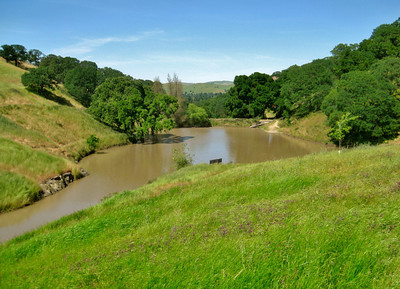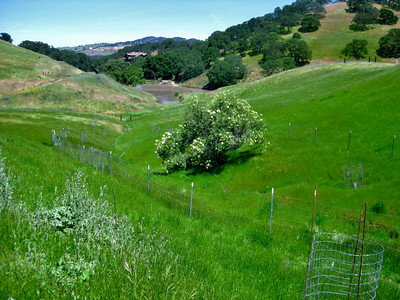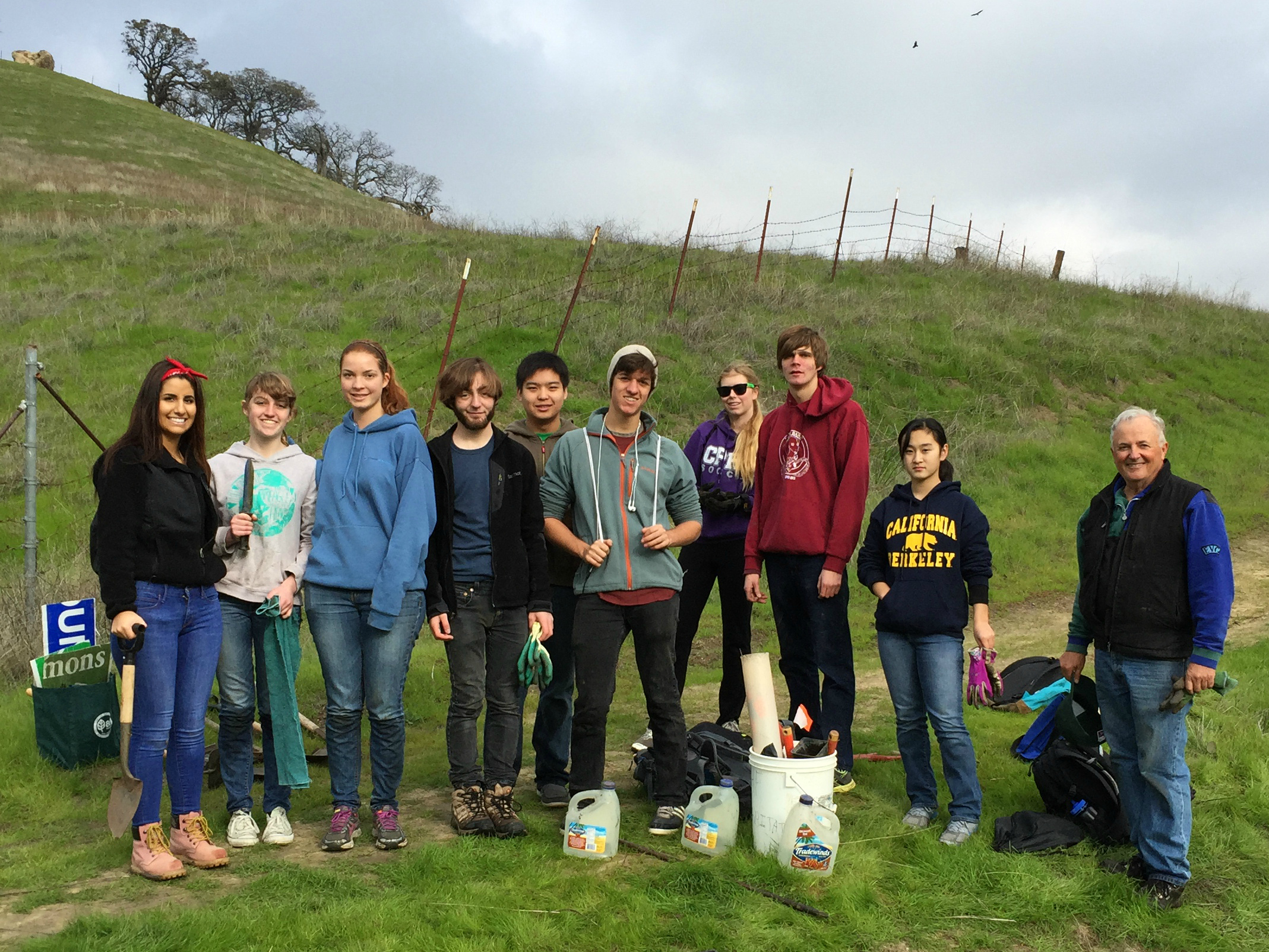Deer Lake Restoration
Project Background

In 1976, the City of Walnut Creek obtained a Land and Water Conservation Fund grant to purchase the Ames property. Sometime after its acquisition by the City, Ranger Ron White planted a sycamore tree on a knoll above the lake on the south side and put some old tires into the lake as bass habitat. As of 2010, the sycamore is still there, but the tires were removed in 2009. There are several stands of native milkweed around the lake.
In 1986, after the dam was damaged by flooding early in the year, the City spent nearly $300,000 to repair the dam.
Restoration Activities at Deer Lake

Fenced in restoration area at Deer Lake featuring a thriving elderberry
In 2008 and 2009, to improve the habitat in the drainages leading into Deer Lake and at the suggestion of Ranger Bylin, the Foundation installed 23 cattle enclosures in the southest and southwest drainages and planted acorns in them.
In 2010, the Foundation planted both acorns and buckeyes principally on the hill between the south and east arms, but also planted some acorns on the east and north sides of Deer Lake. There was a very good success rate for the buckeyes, but a much lower rate of success for the acorns. This was only the second time the Foundation has planted buckeyes, so the success rate was really good news. In 2010, the Foundation removed a patch of Italian thistle from the south arm.
Foundation volunteers planted native grasses in this area in January 2011, but the weather turned cold and dry for 5 weeks, so only a few survived. Later in 2011, our volunteers moved some fencing that had been at Acalanes Ridge Open Space, and used it to protect an elderberry from cattle grazing.
For Walnut Creek’s first ever Community Service Day, a group of volunteers removed Italian thistle from a large area near the kiosk and removed grasses from around the existing plantings and around the sites to be planted in the winter. The volunteers also removed about 6” of soil from a portion of the small depression within the fenced area in order to provide some water later in the year as well as to improve the habitat for growing willows in this area.
In 2014-15, Restoration Work Continues
A third year of drought in 2014 took the lake level even lower, exposing more tires and debris. Two work days with Trash Removal Project volunteers from Mount Diablo Interpretive Association (MDIA) led to removal of debris – including more tires and several creosote logs – from the lake and also the kiosk on the north side of the lake. A major storm in December brought the lake level up significantly but in early 2015, as we enter what some weather-watchers predict is a fourth year of drought, it’s still not at capacity.A planting day late in 2014 saw members of College Park High School’s (Pleasant Hill) Earth Club (shown with project leader Bob Simmons) helping out with planting native grasses, epilobium, acorns and buckeye seeds in strategic restoration areas on the west side of Deer Lake. The Earth Club’s hard work helped start the new year off right for natives at Deer Lake. We’ll continue to improve the native habitat at the lake throughout the year.

College Park High School Volunteers at Deer Lake, 2014
Bob Simmons




 Join/Renew
Join/Renew Donate
Donate Volunteer
Volunteer Maps
Maps Newsletter
Newsletter Facebook
Facebook
